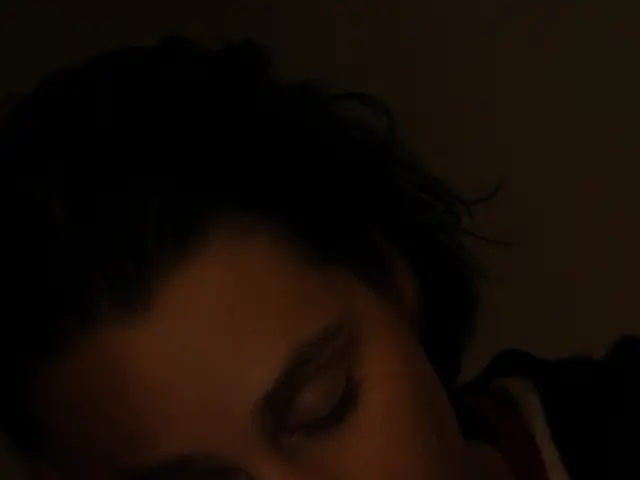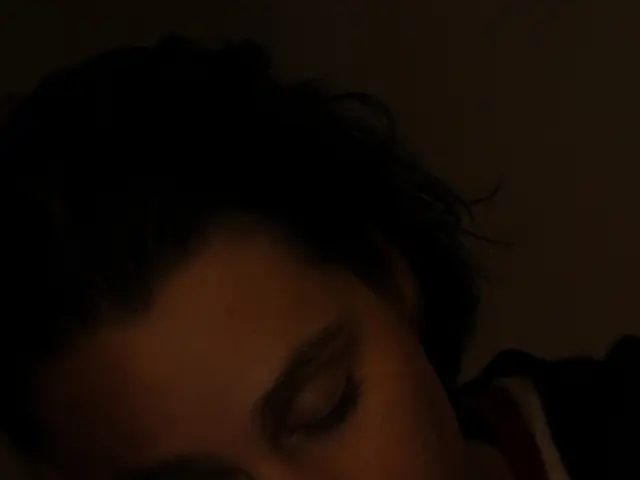Summertime Finger Blemishes: Understanding Dyshidrotic Eczema
Dyshidrotic eczema, also known as pompholyx eczema, is a skin condition that causes intensely itchy blisters. These blisters can be painful or cause a burning sensation, and may appear on the sides of the fingers, palms of the hands, toes, and soles of the feet [1][3][5].
Common triggers of dyshidrotic eczema include exposure to allergens such as metals like nickel and cobalt, household chemicals like laundry detergents, fungal infections (e.g., athlete’s foot), stress, and frequently moist or sweaty hands and feet. Environmental factors and genetic predisposition also play a role in flare-ups [1][3][5].
Symptoms of dyshidrotic eczema include extreme itching, burning sensations, heat sensations, prickling sensations, the sudden appearance of small blisters, painful drying and cracking of the skin, swelling, and changes to the skin around the nail. As the blisters grow bigger, they may weep fluid and cause skin discoloration [1][3].
Stress management can help prevent flare-ups of dyshidrotic eczema. Dietary triggers may contribute to flare-ups for some people, and avoiding foods high in nickel, such as soy products, licorice, cocoa powder, clams, cashews, and figs, may help prevent them [2].
Treatment options typically focus on managing symptoms and avoiding triggers. Topical corticosteroids are the main medical treatment to reduce inflammation. At-home care includes using cool or lukewarm water to wash affected areas, applying cool compresses or short soaks to relieve itching and inflammation, and avoiding irritants. In cases of secondary infection due to broken skin, antibiotics may be necessary [1][2][5].
The National Eczema Society suggests washing with lukewarm water as a strategy for at-home relief. Preventing flares of dyshidrotic eczema involves avoiding known triggers such as allergens or temperature changes, applying moisturizer, wearing breathable materials, and removing rings before washing the hands, applying moisturizer, or sleeping. Bandaging or wrapping the skin after applying creams or ointments is also suggested by the National Eczema Society [4].
If a person with dyshidrotic eczema develops a skin infection, they need to consult a doctor for evaluation and treatment. Using an emollient soap or cleanser instead of regular soap is recommended by the National Eczema Society. Avoiding direct contact with skin-irritating ingredients or products such as detergents and cleansing agents is advised [4].
In some cases, a doctor may prescribe a medical moisturizer, wet soaking with potassium permanganate, topical steroids, a topical calcineurin inhibitor, oral antibiotics, oral immunosuppressant drugs, Botox injections, or phototherapy to manage dyshidrotic eczema [1][2][5]. Taking antihistamines with a sedative effect can help with sleep and potentially prevent flare-ups [3].
In conclusion, managing triggers and applying prescribed topical steroids form the core of treatment, alongside supportive skin care measures to soothe affected areas. It's essential for individuals with dyshidrotic eczema to be aware of their triggers, maintain good skin care practices, and seek medical advice when necessary.
References: [1] National Eczema Society. (n.d.). Dyshidrotic eczema. Retrieved from https://www.eczema.org/dyshidrotic-eczema/ [2] Mayo Clinic. (2020, March 23). Dyshidrotic eczema. Retrieved from https://www.mayoclinic.org/diseases-conditions/dyshidrotic-eczema/symptoms-causes/syc-20352809 [3] American Academy of Dermatology. (n.d.). Dyshidrotic eczema. Retrieved from https://www.aad.org/public/diseases/eczema/dyshidrotic-eczema [4] National Eczema Society. (n.d.). Preventing flare-ups. Retrieved from https://www.eczema.org/prevention/
- Personas with dyshidrotic eczema may find relief by washing affected areas with lukewarm water, as suggested by the National Eczema Society.
- Stress management, avoiding dietary triggers, and applying moisturizer are strategies that can help prevent flare-ups of dyshidrotic eczema.
- Topical corticosteroids, established as the main medical treatment for dyshidrotic eczema, help reduce inflammation, while emollient soaps or cleansers are recommended by the National Eczema Society instead of regular soap.
- In cases of secondary skin infection, consult a doctor for evaluation and treatment options, which may include antibiotics, or medical moisturizers.
- Supportive skin care measures, such as cool compresses, short soaks, and avoiding irritants, are important in managing dyshidrotic eczema symptoms, alongside proper awareness of triggers and seeking medical advice when necessary.




